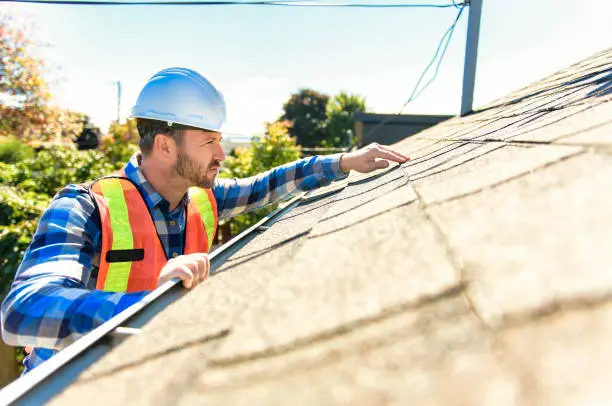Debunking Roofing Myths and Clarifying Key Terms
Your roof is one of the most important parts of your home, but for most homeowners, it’s also one of the most confusing. From myths about when to replace a roof, to terms contractors use that sound like a different language, roofing can feel overwhelming.
That’s why we’ve put together this guide to answer common roofing questions, bust popular myths, and explain key roofing terminology so you feel informed and confident the next time you talk to a roofing professional.
Common Roofing Questions Answered
1. How long does a roof last?
Most asphalt shingle roofs last 20–25 years. Metal, tile, and slate roofs can last 50 years or more with proper maintenance. However, factors like weather, ventilation, and installation quality make a big difference. Check out our FAQ page for more information.
2. Do I need a full replacement, or can I just repair it?
Not always! Repairs can extend the life of your roof if the damage is localized (like missing shingles or a small leak). But if the roof is nearing the end of its life or has widespread issues, replacement is usually the better investment.
3. Will insurance cover my new roof?
Insurance typically covers damage caused by storms, wind, or hail. It won’t usually cover roofs that fail from old age or neglect. Always check your policy and have your roof inspected after a major storm.
Myths About Roofing – Busted
❌ Myth 1: A new roof can be installed over old shingles.
While it’s technically possible, it’s not recommended. Layering shingles can trap heat and moisture, shortening the roof’s lifespan. A proper replacement means removing old materials first.
❌ Myth 2: A roof only needs attention when it leaks.
By the time you see water spots inside, the damage could already be significant. Preventive inspections can save you from expensive repairs.
❌ Myth 3: All roofing materials are the same.
Not true! Asphalt shingles, metal, tile, and slate all perform differently in terms of durability, cost, and appearance. Choosing the right material depends on your budget, climate, and home style.
Roofing Terminology Explained
-
Shingles – The outer layer that protects against weather (asphalt, metal, tile, etc.).
-
Flashing – Thin metal pieces that prevent water from seeping into joints (like around chimneys).
-
Underlayment – A protective barrier between the decking and shingles.
-
Decking – The wooden foundation your shingles are nailed to.
-
Ridge – The top horizontal line of your roof where two slopes meet.
-
Soffit – The underside of the roof’s overhang.
-
Fascia – The vertical finishing edge that holds gutters in place.
Understanding these terms makes conversations with contractors much easier and ensures you’re not left guessing about your roof’s condition. Check out our FAQ page for more information.
CLICK HERE Kansas winters can be tough — learn how to prepare your roof before the first snowfall hits Leavenworth County.
Final Thoughts
Your roof is more than just shingles — it’s your home’s first defense against the elements. Knowing the basics helps you make smarter decisions, avoid costly mistakes, and protect your biggest investment.
If you have questions or want a professional roof inspection, contact Invictus Roofing today — we’re here to help homeowners feel confident and protected.


